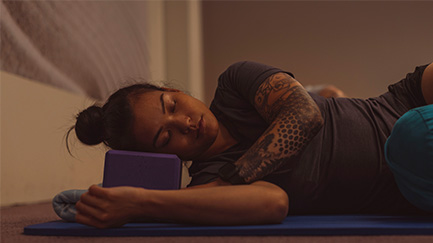Physical activity is a well-known to improve one’s health, however, not all physical activity is beneficial.
Have you ever noticed that how you feel after a walk, run or workout is much different to how you feel after a busy day on your feet at work? Well, that’s because evidence suggests there is a paradox between the beneficial outcomes associated with leisure time physical activity (LTPA) versus the detrimental health outcomes associated with high levels of occupational physical activity (OPA). In this latest article, our Exercise Physiologist Harley answers several questions about the physical activity paradox and explains the importance of leisure time physical activity.
How does LTPA and OPA effect the body?
Even though they are both forms of physical activity, LTPA and OPA can have number of positive and negatives effects on our health and wellbeing.
LTPA typically results in several positive effects such as increased energy levels, decreased resting blood pressure, decreased resting heart rate and it can prevent the effects on cardiovascular disease, and more.
On the flipside, OPA can affect the body negatively, leading individuals to suffer from chronic exhaustion, elevated resting blood pressure and heart rate and in some cases it can have a correlative effect on cardiovascular disease.
What makes this a paradox?
An explanation for this physical activity paradox is the very different characteristics of physical activity when performed during leisure time and work.
LTPA often includes dynamic movements as well as a combination of:
- Short bursts – anywhere from a 10 minute circuit to a couple of hours on a run,
- Longer recovery time – next day or a couple of days in between activity,
- Varied movements,
- Specific movements,
- Graded exposure to movements,
- And more often than not; a positive association!
Whereas OPA is often:
- Hard manual labour,
- Repetitive handling,
- Prolonged static postures,
- Prolonged elevated heart rate,
- Prolonged elevated blood pressure,
- Has insufficient recovery time – often less than 12 hours,
- Performed with a negative association.
How to avoid the physical activity paradox?
To ensure you don’t fall into this paradox, there are a few things you can do.
- Don’t rely on your occupational activity for all of your physical activity requirements.
- Try to develop S.M.A.R.T goals to ensure you are enjoying physical activity.
- Specific, Measurable, Achievable, Realistic, Timely.
- Make time for leisure activities that you enjoy:
- This could be hiking, water sports, running, cycling, martial arts, dancing, group exercise, and more.
If your current occupation is leaves you quite exhausted, it may be hard to find the time and motivation to invest in LTPA, however, it is very important, almost as important as someone with a more inactive job. If you are a veteran that need assistance with working out how to fit LTPA into your schedule, you can book a planning session with an Exercise Physiologist to discuss your situation.





